The Owl Irruption means crazy birding excursions like mine yesterday afternoon are possible. In just over one hour, I saw all three species of these owls: Boreal, Great Gray & Great Horned Owls. I consider myself lucky to live in the Northland where all three of these owls species both live, but also some of their cousins from north of the border will occasionally pay us a visit. Normally owl irruptions end on or about March 1st, which is only 11 days away. Anyhow, yesterday’s terrific trio! Did I mention it was cold? All three owls wanted sun, but also to avoid the fierce Northwest wind. This morning it is -15F to 25F below zero depending upon where you live (real cold air collects at the bottom of hills).
Boreal Owl (sleeping in the sun … it did apparently not move for the next four hours)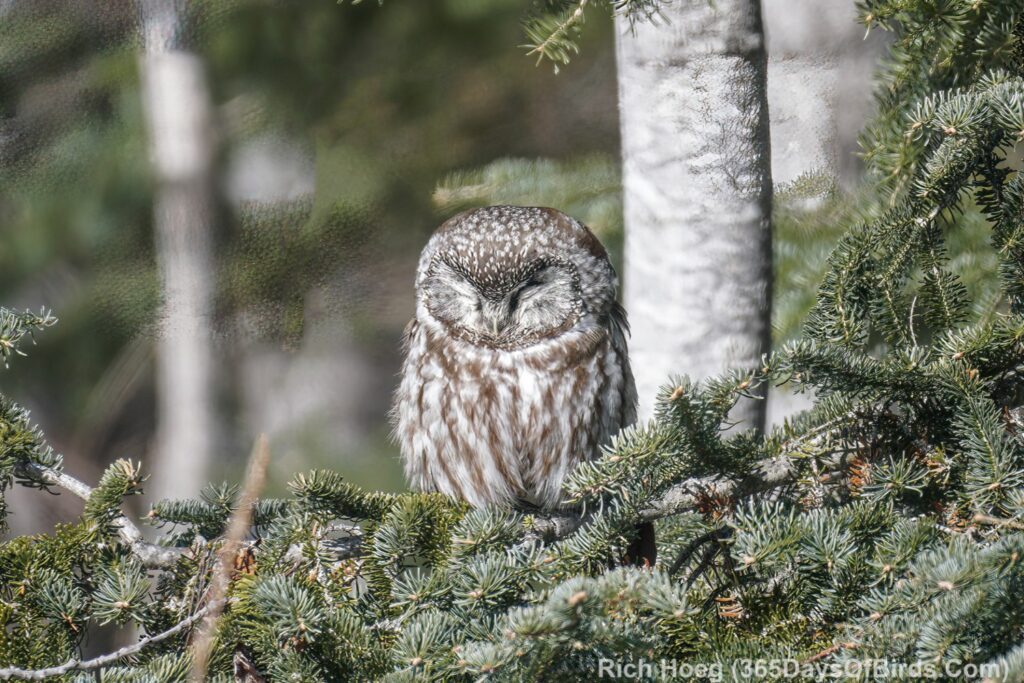
Great Gray Owl (trying to get comfortable within its pine needle mattress before a snooze)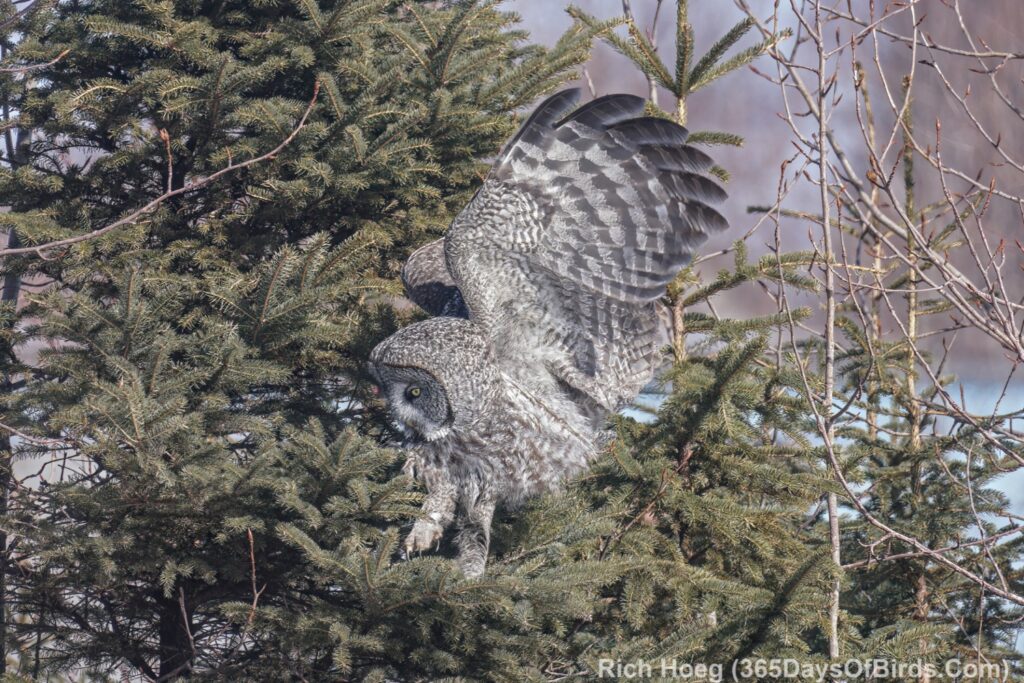
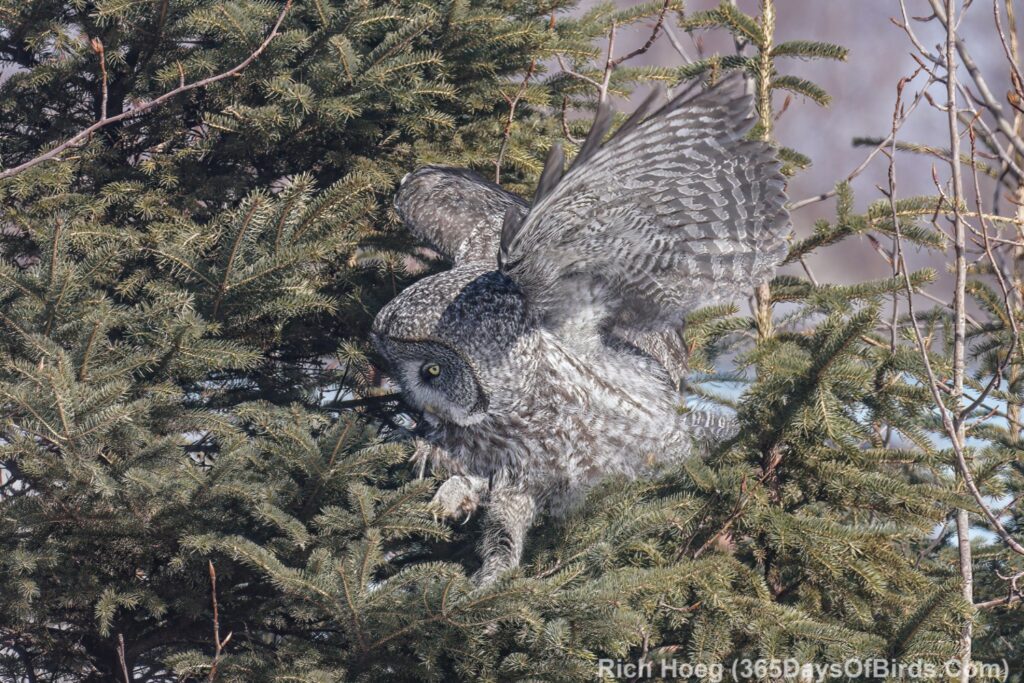
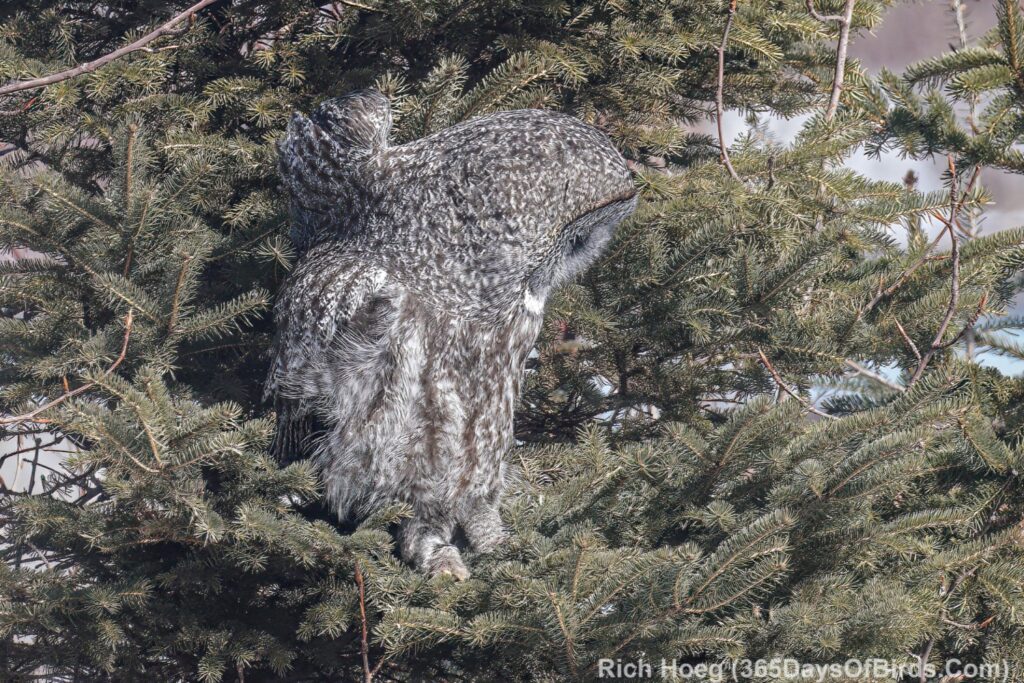
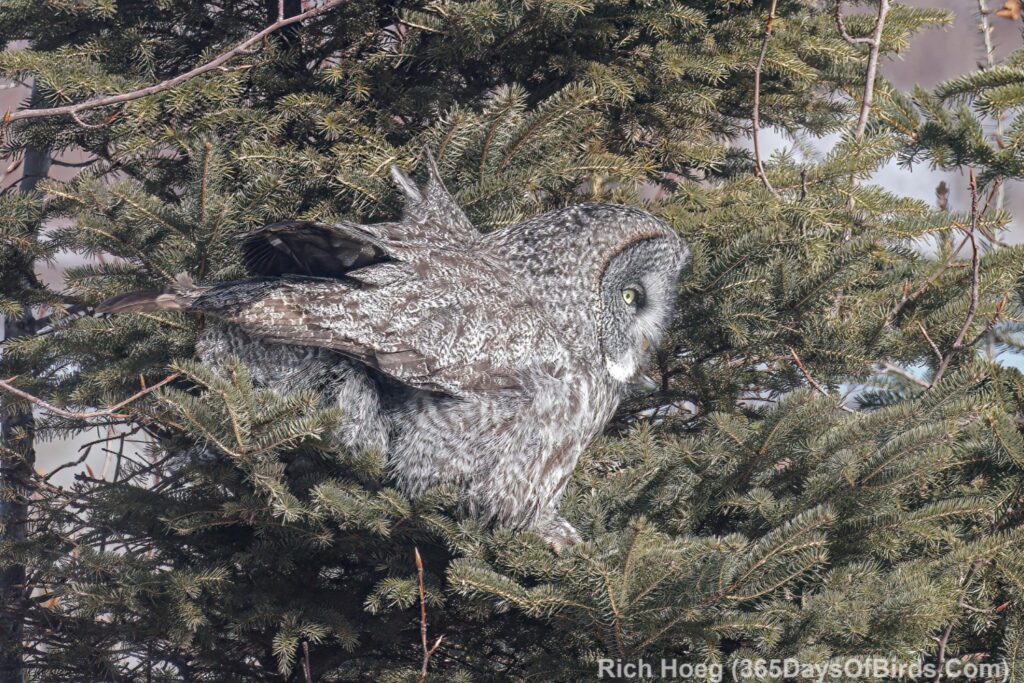
Amy! My local Great Horned Owl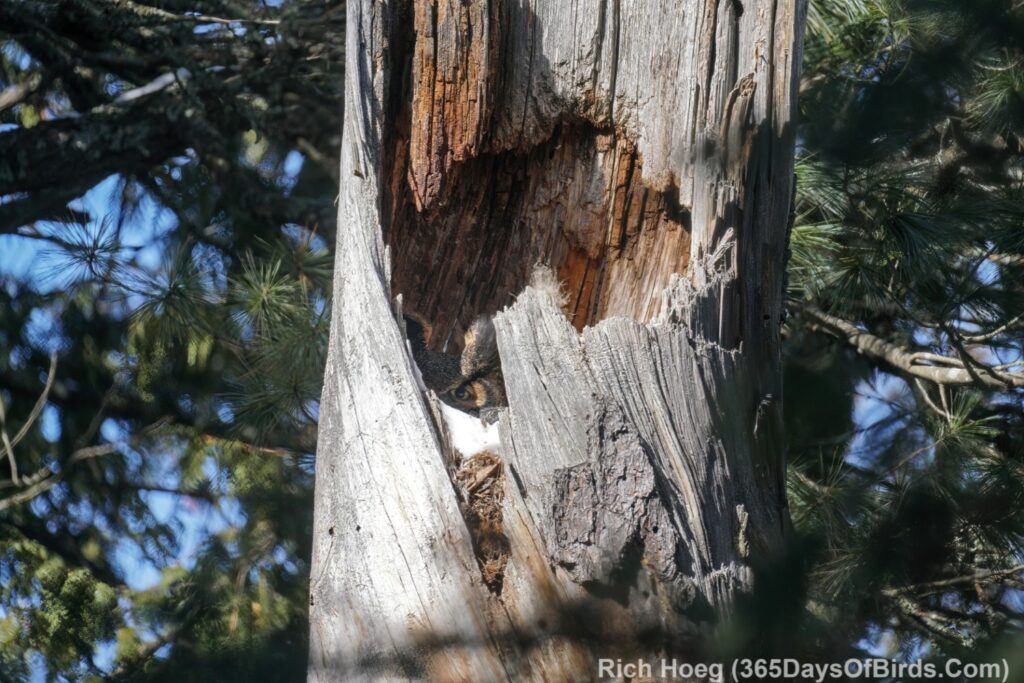
The sun is finally peeking out between the trees at 7:20 am. Time to go make my rounds of all three bird feeder stations. My feathered friends should all be hungry after such a cold night.
Discover more from 365 Days of Birds
Subscribe to get the latest posts sent to your email.
thanks for the amazing photos of those precious owls. amy looks so beautiful in her tree. and thank you for taking care of the feeders, getting out there and sharing with us!
So why don’t those wise owlsmigrate south during the cold winter?
Owls are highly specialized hunters and quite able to locate and catch prey during the winter. Migration is very tiring and dangerous for all species of birds. If possible, and there was sufficient food sources, all birds would “remain north”.